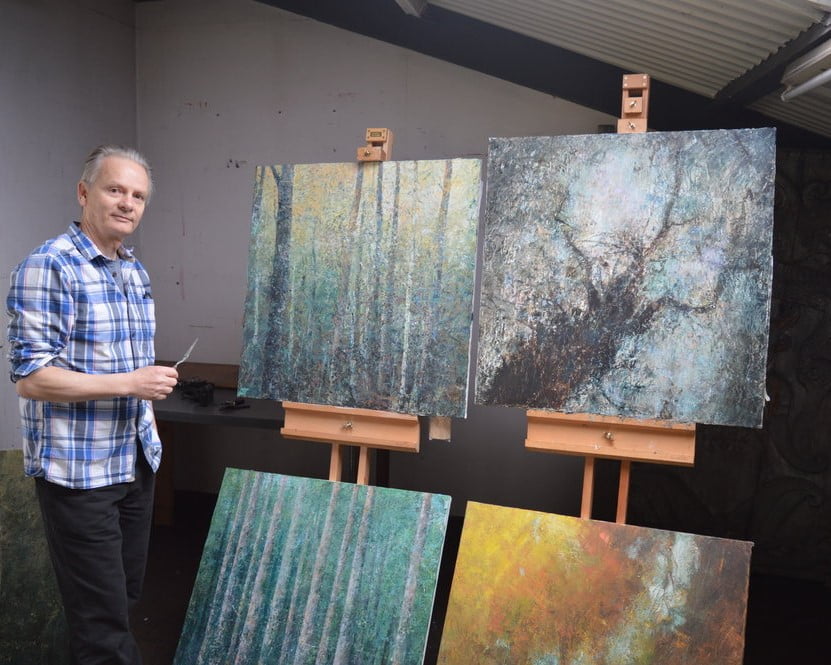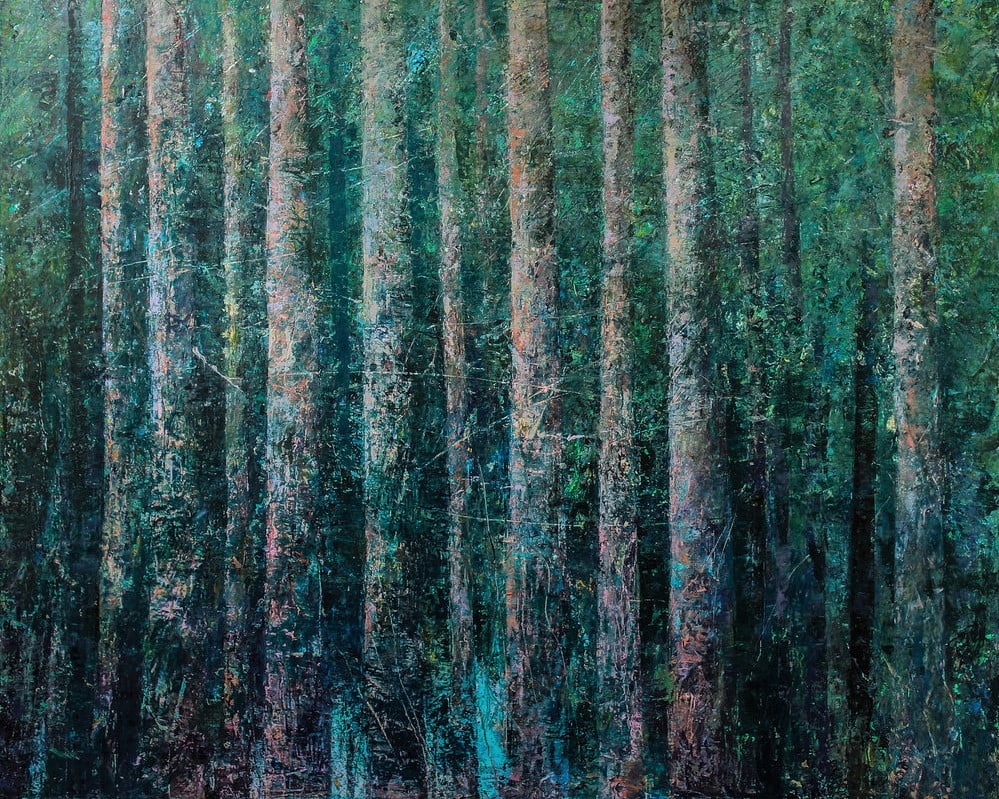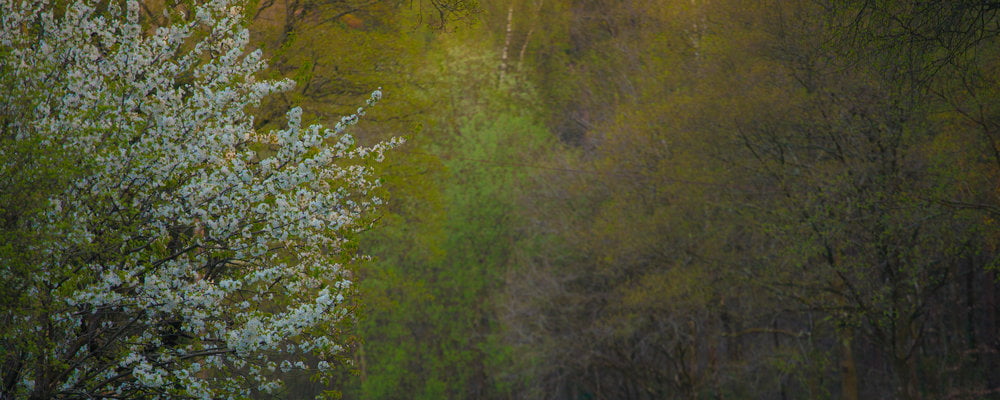- Structure and shape can be the building blocks of any great work of art, however the composition does not always have to be representational. :
The Little Van Gogh residency is an opportunity offered to an artist in the Little Van Gogh network every two years. Inviting an artist to take two weeks out of their usual practice, they are awarded accommodation and studio space in the village of Ashurst inside the New Forest national park. The artist is also awarded £500 towards material costs and a £100 travel contribution.
This year the Little Van Gogh residency was awarded to Cambridge artist Peter Corr.
Peter approached the residency with the intention to produce work born out of his literal experience of the place that he found. It couldn’t be planned for but he visited his local Stepford Forest in preparation to familiarise himself with what might be possible.
“I had thoughts on which materials I might use but in terms of subject matter I had no idea”, explains Peter. On arrival at the residency, he took a few days to immerse himself in the place before beginning any work, walking in and experiencing the forest landscape.
Peter began to work on a series of paintings that reflected a profound sense of being in a significant place. Trees became the focus of his work, “There is a transcendental aspect to trees and something primeval about them and I tried to capture that.”
This series is not pure abstraction nor is it a literal representation of the forest. Peter works to “keep tension between realism and a personal response. It’s a push and pull process”, though he admits he is often fighting against the work becoming too literal.


As a child Peter was good at drawing and continuous praise from teachers, friends and family made him want to do it more. “If you want praise from people in art and design when you are young, the best thing you can do is draw realistically, photographically and I could do that.” Peter became attached to the applause, marring his creative process so for him it’s important to break away from literal representation of his subject.
Peter is a photographer as well as a painter, though he rarely paints directly from photographs. “It’s as though I have absorbed all the information from the photograph onto my retina through the view finder”, he explains, “and if I work directly from the photograph, it usually goes wrong and I become slave to the image which stops me working in a way that’s more natural.”
Working in oil paint and cold wax, a medium Peter concocts in a saucepan from beeswax and turpentine, he builds up often more than six or so layers into works that capture the wisdom and majesty of the New Forest. There is a pared back, minimalist quality to his work, which is enriched with textures that he carves into the crayon like surface. “I scored into the surface of the paintings to literally recreate the sensations and textures that you might find in the forest; the bark and the root surfaces”, explains Peter.
He places great trust in his process and materials, following them intuitively. “There’s an unexpected element to this process. You have to go with what the material will allow you to do as well as being open to chance things happening and things going wrong.”
It’s not unusual for Peter to completely erase a piece he has been working on for two or three weeks and starting again. “The moment I start thinking a piece of work is going well, that’s a real warning sign that it’s doing the exact opposite. In order to mitigate that self-indulgence, I have to be brave enough to trash the whole thing and start over- It happens all the time.”
The body of work that Peter has created out of his time on the Little Van Gogh residency offers the viewer the experience of being in the forest rather than seeing what the forest looks like. The play of light pouring through the canopy features and the work conveys an ancientness and simultaneous timelessness. The forest is an organism much unchanged through the centuries and Peter’s work gives us a sense that we could be standing in the New Forest far before it was ever given that name.
Peter found the residency supported his creative journey as an artist, “There were no interruptions and I could focus exclusively on what I wanted to do. It was extremely helpful and the experience will feed into anything I do moving forward.”


Just say Your opinion.
Adeeb Dholakia
7 years ago
I think its fantastic
YOUR COMMENT